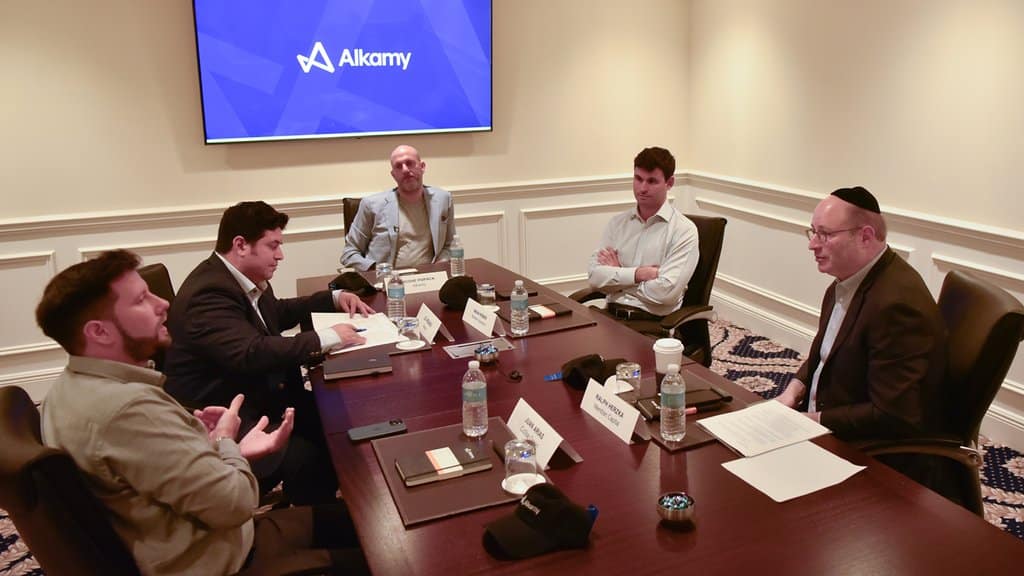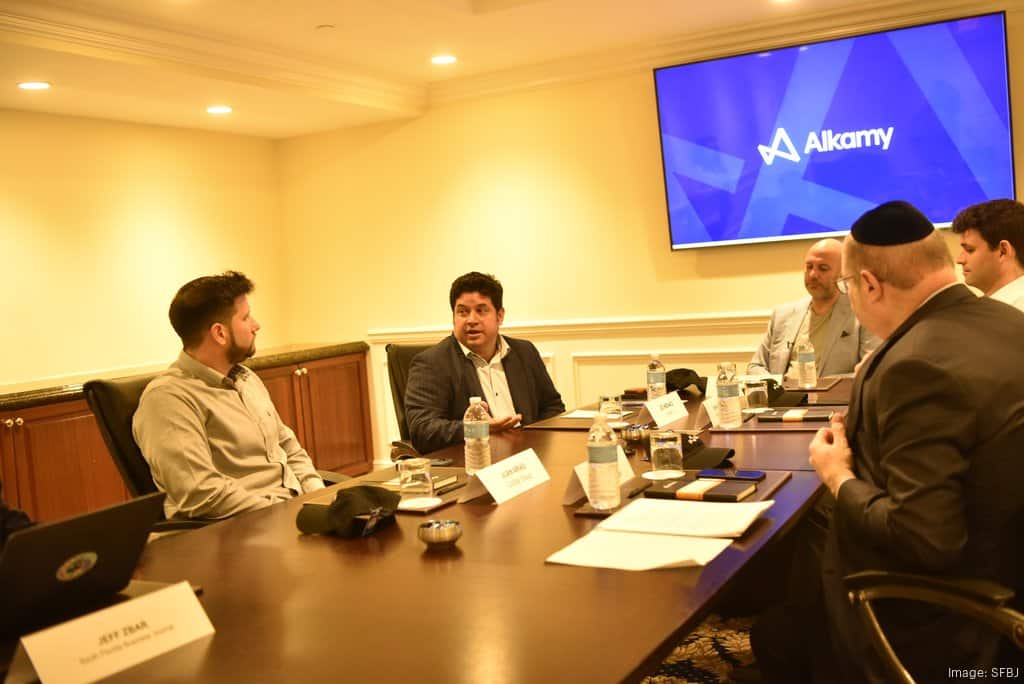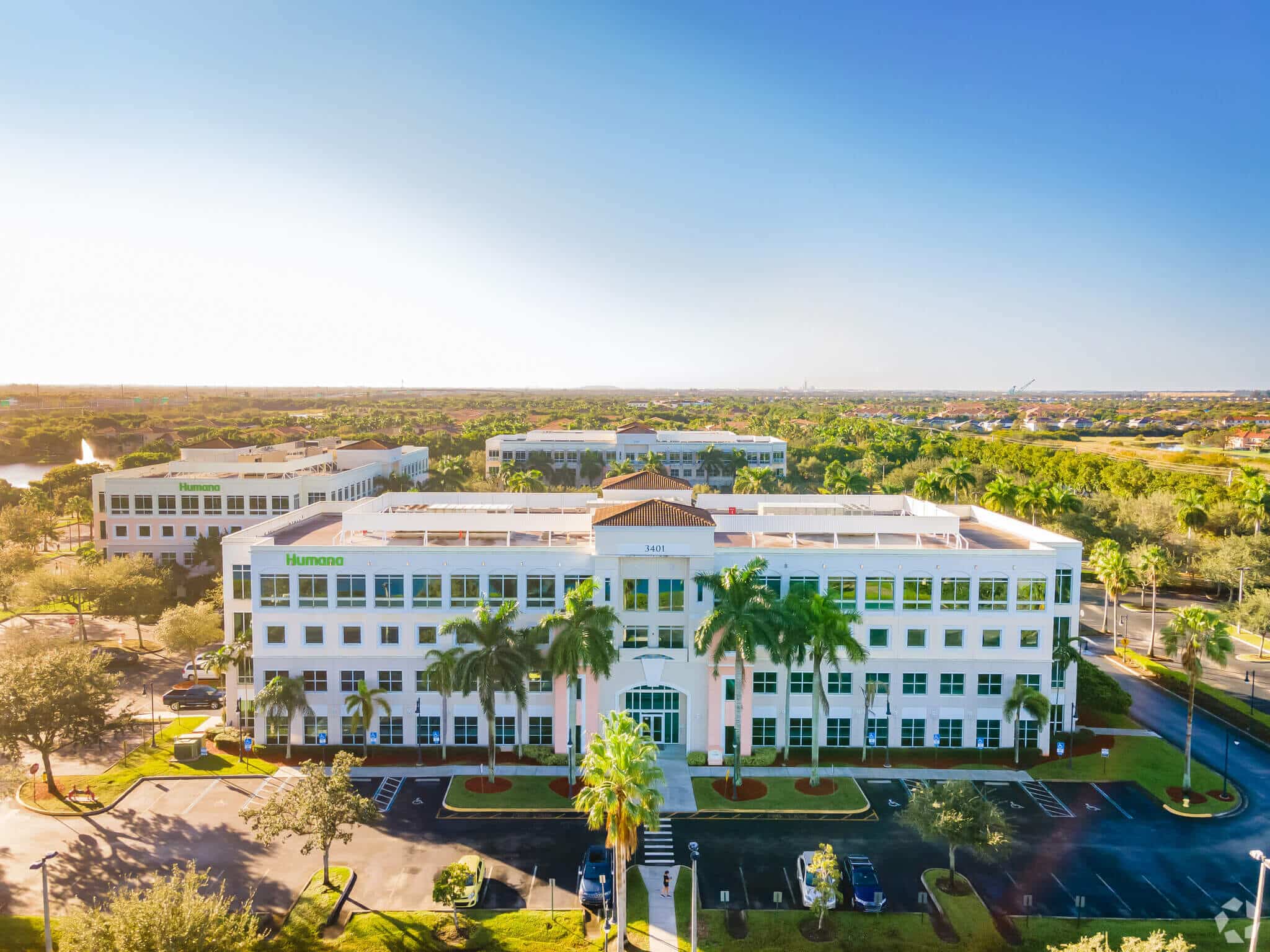South Florida: The Prime Destination for the Right Opportunity
As we mark the launch of Alkamy, we brought together top minds in insurance, banking, and analytics for an exclusive “Table of Experts” discussion on the trends shaping real estate in 2025. Their insights, strategies, and predictions were featured in the South Florida Business Journal’s Q1 Real Estate Special Edition – offering a must-ready analysis for industry leaders seeking their next big move.
Read the full summary and stay ahead of the curve

South Florida over a century ago was built on business opportunities. After real estate and economic cycles, the impacts of the pandemic, and the region’s and state’s continued strong performance since then, professionals in the sector are still seeking out — and finding — ample opportunities.
In a recent real estate roundtable discussion held at Trump National Doral, executives from the development, investment, insurance and research sectors recounted South Florida real estate history and explored where the market could be heading. They found that South Florida’s regional play, once overlooked in terms of markets, demographics and reliant on synergistic partnerships, is now revealing asset and financing availability.
With a keen eye that balances risk, insurance and compliance, lingering supply chain issues, threatened and real tariffs, and evolving government policies, smart players are seizing opportunities.
The state’s ‘open for business’ policy, which fueled growth during the pandemic, continues to yield economic benefits, said Moshe Popack, co-founder and chairman of Alkamy and YMP Management.
“We still today have 1,000-a-day net migration,” Popack said. “It’s been five years since Covid, and we’re still seeing economic growth and how the effects of valuation, combined with inflation, are increasing the values of real estate.”
“The migration of banks, hedge funds and financial services firms continues to set South Florida apart as a growth market,” added Ralph Herzka, founder and senior chairman, Meridian Capital. The New York-based real estate services firm has a large office to serve its Florida business. With so many key companies making this their home, “the opportunity for growth is continuing.”
A market facing challenges
In the current market, slow permit approvals and regulatory delays create challenges for developers and investors, Popack noted. For borrowers, banks are sharing the lending space with a host of other financers looking for solid projects to underwrite. Herzka said that bankers are doing much lower leverage point.
Regulatory regimes have helped spur continued real estate investment activity. Even as interest rates remain higher than recent years, headwinds such as affordability are being addressed. The state’s Live Local Act, a comprehensive attainable housing strategy that incentivizes developer and investor activity, has helped counter the region’s low inventory of affordable and workforce housing. The goal is to deliver 100,000 units in Miami-Dade County by 2030, and some 500,000 statewide, panelists said.
“Even as lower-income residents leave the market because of high costs of living post-pandemic, including interest rates, insurance and HOA costs, and high home values, the region remains attractive for the wealth and migration of new families and companies moving in,” said Juan Arias, director of market analytics with CoStar. South Florida has among the lowest rates of homeownership in the nation, driven by high costs of living.
“It’s a double-edged sword,” Arias said. “If we want the region to continue to progress…we have to make sure it’s sustainable relative to the rest of the country and for the local community as well.”

Advancing projects
Comparisons between New York and Florida lay out the challenges faced by a fast-growing market. The distance from Homestead in south Miami-Dade County to Jupiter in north Palm Beach County is about the same from New York City to the Hamptons on Long Island. However, “the finger of developable land between the Everglades and the Atlantic Ocean already has over 6 million people,” Popack said.
Multifamily housing has been a boon for developers, with residences coming online at record levels. “Last year, the market saw $340 billion in debt financing nationwide,” Herzka said. “This year, it could top $500 billion. If interest rates drop, even more capital could come into the market,” he added.
South Florida developers will get more value from luxury development, especially for out-of-state and international buyers. This is evident in Broward County, where the buying opportunities are more pronounced. With the high cost of construction, developers are challenged to deliver workable numbers, panelists agreed.
One of the challenges facing the region historically has been long commutes, congestion and infrastructure to better connect the region. Since the 1980s, the TriRail commuter train has spanned the “tri-county” markets of Miami-Dade, Broward and Palm Beach counties. The arrival of the Brightline was intended to ease the commute for talent living throughout the region, though rising ticket prices have dissuaded some users.
With so much of that talent living in the western suburbs, Arias believes more mass transit options must be developed.
“We’re in the early stages of creating that fabric of transportation in the area,” Arias said. “But we’re really accelerating the densification of the area.”
The growth of walkable communities has softened commuting challenges. Las Olas, Brickell, South Beach, even Wynwood have seen new office and residential buildings, where few existed before.
Though few are scheduled for immediate delivery, new Class A office towers, most recently 830 Brickell, have driven up rents. In certain cases, approaching $200 per square foot. This has forced many tenants to look to other office markets, such as Coral Gables, the Miami airport area, Aventura, Miami Beach to the east, and the suburbs to the west.
Moderator JD Henao with YMP Real Estate Management wondered how cities will connect people to communities and business centers.
“As density increases, city planners will seek new options, maybe light rail and other transit options,” said Brian Riemer, CEO, Riemer Insurance, one of the largest family-owned agencies in South Florida servicing commercial and personal lines and employee benefits.
However, as density increases, land values are rising. Popack noted that greater city or county incentives might be needed to lure developers to bring sustainable solutions to certain areas.
“The growth of public-private partnerships, atop incentive packages, are helping, but they’re not enough,” Popack said. “You need sustainable solutions that are real.”
Developers who have a vision for the future have successfully brought transformational change. Herzka mentioned Moshe Mana, the local developer who has invested in and driven change to now-thriving neighborhoods. Stephen Ross’s Related Companies’ deep investments in West Palm Beach created what is now called “Wall Street South,” and lured plans for a $520 million campus of Vanderbilt University. The hope is that these projects will create lasting, high-value careers and regional prosperity.
Solutions to macroeconomic headwinds
The panel discussed the host of challenges facing the South Florida and national real estate market. Tariffs, supply chain and logistical challenges; labor shortages and deportations; stubborn interest rates; high insurance costs in an environment of increasing destructive and costly natural disasters; and other macro issues, present significant headwinds.
Arias pointed out how mass deportations, or even the threat of ICE activity, will further deplete a blue-collar workforce in construction and other critical sectors already hard pressed to live in a high-cost market.
Conversely, how will South Florida remain attractive to Californians, Northeasterners and others who during and since the pandemic drove inbound migration? While migration has slowed, Florida remains among the greatest net-gain destinations in the country, second only to Texas. Driver license exchanges are 20% above pre-pandemic levels.
The threat of hurricanes is keeping insurance costs among the highest in the nation. With few recent direct strikes, the insurance market “has stabilized compared to previous years,” Riemer said. Reinsurers have signed new agreements, which has strengthened market capacity. He’s hopeful this could lead to a 10% decrease on property insurance costs.
Panelists had mixed feelings on how policy changes and trends might improve South Florida’s market conditions. They would like to see more involvement from elected leaders and policy makers to lure more businesses and economic growth.
To be sure, homeownership remains unattainable for many; fewer than 56% of Miami residents own their homes, “and that number is trending downward,” Arias said. It’s about $1,000 less expensive to rent than to own a home. An apartment supply wave over the next several years will help prices stabilize. Condominium HOA special assessments continue to drag the category’s valuation. Many owners, both young as well as retirees and snowbirds often on fixed incomes, facing hard decisions on their ability to afford their units in the face of rising costs.
“Older condos were an affordable option,” Riemer said. “But new reserve and recertification requirements have significantly increased costs – many condo associations simply weren’t prepared for such drastic changes.”
Some condos owners and associations, especially those on the water, are receiving offers to sell out to developers hoping to build towers with luxury residences.

Looking forward
According to Arias, the market still needs inbound migration to fill some of the multifamily residential properties coming online throughout the downtown and eastern corridor.
“Given where homeownership costs are at, demand for multifamily is a long-term trend that will continue to be strong in South Florida,” Arias said.
From developers and lenders, experienced partners are finding success in the marketplace. Stringent underwriting is creating opportunities for those with a track record of success, Herzka shared. Whether for luxury development, multifamily or workforce housing, office or commercial real estate, the deals are there for savvy partners with the right connections.
“You need to have the top talent representing you,” Popack said of working with various municipalities and boards. “If you’re not a known entity, you can’t get what you want done in an expeditious manner.”
No real estate market is more dynamic than that found in South Florida. Over the generations, through boom-and-bust cycles and global events, the region has outperformed other markets and today remains the ideal destination for investors, developers and other partners seeking the right opportunities.
Lightning round:
What will help real estate organizations stand apart in 2025? Can you sum it up in one word or phrase?
MOSHE POPACK: You just have to buy right. You buy in decent growth areas, but compounding returns happen over time. You shouldn’t necessarily look to flip. Buy a big enough asset, if it’s broken, fix it up, and hopefully you have enough cash to hold it for 10 years, and statistically you should get alpha. That model usually has alpha returns.
RALPH HERZKA: Opportunity. There’s going to be huge opportunity. You just have to source it, find it, and readjust it. Readjustment is the right word. People will look back and say, “He was smart.” Another word is relationships. Relationship with lenders, with municipalities. Everything is relationships.
JUAN ARIAS: Smart. This time around, you can’t expect a constant downtrend on cap rates to save you on the value side. So, you have to be very smart about what slice, what sub-slice, what basis are you buying the property at that you can believe in the rent growth you’re going to get out of it to get out at a right value. Don’t expect interest rates over 10 years to drive down the cap rate to save you on the value side in five or 10 years.
BRIAN RIEMER: For me, it’s hands on. It’s that local expertise, boots on the ground. Know the community. Know how to get things done. Capitalize on those opportunities. If you don’t have that hands-on motivation, you’re not going to win. In a time of readjustment, those are the people who are going to set themselves apart.
Moshe and Yaffa Popack, 20-year veterans of the South Florida Real Estate Community, are proud to announce the launch of Alkamy, a new umbrella brand that unifies their various initiatives and projects under one cohesive identity. For over two decades, the Popacks have been deeply involved in both for-profit and non-profit organizations—locally and statewide— dedicating their efforts to improve the lives of all Floridians. This new brand will serve as a calling card that encapsulates the principles and values guiding them, the array of projects that comprise their current body of work, and their vision for future endeavors. Explore their new website at www.alkamy.com to learn more about their mission and achievements.

